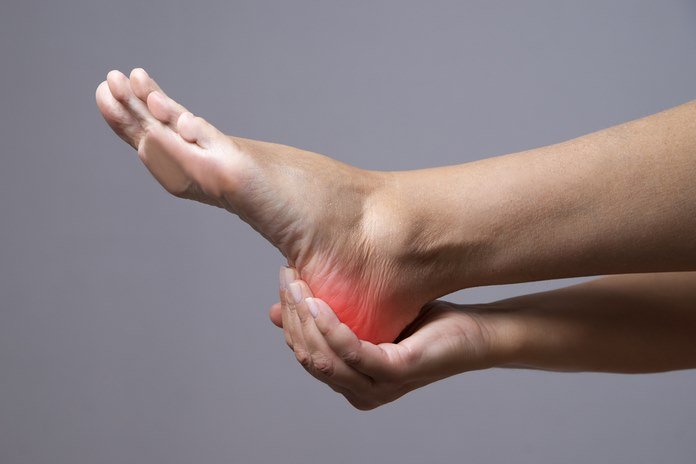Plantar Fasciitis Symptoms

Nothing can disturb normal daily lining as much as the pain that abstains you from moving around. If you are experiencing pain beneath your foot, it might need a medical check-up. The inflammation of the plantar fasciitis ligament running across the heel to your toes could result in sharp, stabbing pain in your heels. Depending on the extent and the cause of the plantar fascia inflammation, you might ease your symptoms with a non-surgical treatment. On the other hand, in severe cases of plantar fasciitis patients might consider undergoing a surgical treatment. (3)
Plantar fasciitis leads to pain in the bottom of the feet. The plantar fascia is a web-like, thick set of ligaments that joins your heel to the toes of your foot and helps you to walk, supports the arch of your feet, and acts as a shock absorber. Plantar fasciitis is one of the most commonly occurring orthopedic complaints. In general, the plantar fascia ligaments go through a lot of wear and tear throughout a person’s life. Excess pressure on your feet can result in tear or damage to the foot ligaments. The plantar fascia suffers from inflammation that leads to heel stiffness and pain.
The actual cause behind plantar fasciitis is still not clear. According to a 2003 study, the condition might occur due to degeneration rather than inflammation of the feet ligaments i.e., the plantar fascia. As fasciitis means swelling of a fascia, so it clearly hints toward the inflammation of the ligaments. Inflammation due to plantar fasciitis usually happens at the bottom of the heel. The primary symptom of those who suffer from plantar fasciitis is stabbing pain that originates at the bottom of the feet near the heel or sometimes at the midfoot area. Though it usually affects one foot at a time it might affect both feet sometimes.
Pain at the bottom of the feet
Painful heels occurring due to plantar fasciitis occurs gradually with time. The pain originating at the bottom of the feet can be sharp or dull depending on the intensity of your inflammation or tear to the ligaments. Sometimes people experience an ache or a burning sensation on the bottom of the heel that extends outward through the heel. The pain usually gets worse especially in the morning when you try to take your first steps, if you have been sitting, or lying down for a longer period. In addition, climbing stairs can also be quite difficult as a result of painful and stiff heels.
